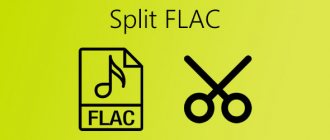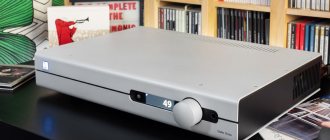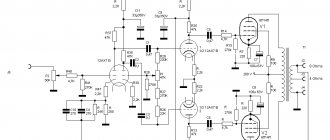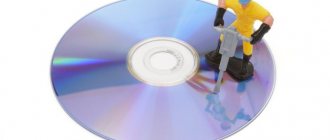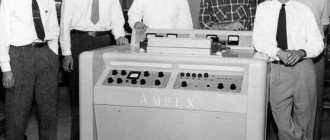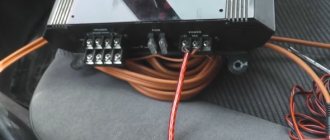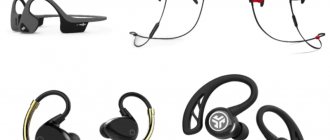Seller Description
Additional Information
Type: Lossless Music Player Support: USB-U Disk/SD Card Audio Output: Coaxial/RCA/3.5mm Headphone Jack Decoder Chip: AK4495 Music Formats Supported: FLAC, WAV, MP3, WMA Output Power: 250mW (32Ω load) Frequency range: 20~20KHz Hz (±0.5dB) Distortion: 0.005% (1KHz) SNR: 107dB Card support: Maximum support 62GB TF/Micro SD Card Power: 220V Additional information from other sellers: *Usage The latest American ESS master, hardware decoding. * 3.5 inch wide viewing angle IPS TFT LCD high definition display * JRC MUS8820 OP amp * Nikon, Wima, SILMIC capacitors))) * CMC-816 terminal * Dimensions: 192X70X281mm, Weight: 2.5Kg Format Support Details: WAV: 192K 24BIT APE: 96K 24BIT FLAC: 192K 24BIT MP3: 44-48K 16BIT
USB DAC Breeze Audio SU2A: fastidious with great sound
Today we are reviewing again an inexpensive DAC with a built-in headphone amplifier. The price tag has increased to $50, but the device has also become noticeably more complicated. Now we have full power supply from 12 volts 1 ampere, 4 different frequency generators and native DSD support. This is not to mention the ESS DAC, XMOS USB chip and MUSES amplifier. The minced meat here, to be honest, is absolutely royal. I took a purely wired version for myself, so I don’t have the CSR8675. However, there is an option with Bluetooth.
Characteristics
- DAC: ESS ES9038Q2M
- USB: XMOS XU208
- Amplifier: MUSES 8920
- Audio resolution: up to 384 kHz/24 bit, DSD128
- Frequency range: 20 Hz – 40 kHz
- Power: 12 volts 1 amp
- Inputs: USB Type B, Bluetooth (optional)
- Outputs: 3.5 mm jack, RCA
- Dimensions: 68.5 x 33 x 90 mm
- Weight: 168 g
- OS: Windows, MAC OS, Android, iOS
CHECK CURRENT PRICE FOR Breeze Audio SU2A
Video version of the review
Unpacking and packaging
This time there was no cable included in the kit, only the device itself and the power supply for it. Naturally, I immediately uncovered my branded unit from GP, which is also 12 volt 1 ampere. But the stock one wasn't much worse. The USB Type B cable, as in the previous model, can be taken from a store or from an old scanner/printer.
Design/Ergonomics
The device has a metal body, and everything is made tactilely more interesting.
There are longitudinal ribs on the sides, but there is absolutely nothing above and below.
I glued on the legs from the router kit myself.
The arrangement of functional elements is still the same mess. On the front we have the Breeze Audio logo, a power switch, an operation indicator, a USB Type B port and an input for the power supply.
And at the back there is a linear RCA output and 3.5 mm. under headphones.
That is, it is also impossible to conveniently place it on the table. Either the RCA cables will hang in the front, or the headphone output will be at the back. And if for 20 bucks we gave up on it, then for 50 we would already like to have at least some kind of reasonable order.
With Windows 10 the device started up automatically.
For some reason, the XMOS drivers I had were not detected by the device, but the seller willingly sent his own. The functionality in them is of course reduced, but for the needs of an audio player it’s perfect.
On my smartphone I used an Onkio player with direct access to the hardware.
For those who don't know. All these tricks are needed to bypass the system mixer. Which is not only not very high quality, but also reduces all audio streams to one using the up or downsampling method. But we want to listen to music as close as possible to how it was recorded. Therefore, only ASIO, WASAPI Exclusive or HQ access in Android.
In terms of frequencies on a PC, we are limited to 24 bits 192 kHz. Why? - completely unclear. On a smartphone we already have access to 384 kHz. However, the USB and DAC chips used are capable of even more.
Regarding heating, everything depends on the opamp used. So, at stock the case is a little warm, but after installing the AD826 in the crib, it cooks like a stove.
The volume is decent. At a 32 ohm load, I turned it up to about 30% of the maximum.
With iron we have simply beauty. The latest mobile DAC ESS ES9038Q2M, the best for today XMOS XU208 is responsible for USB, and the MUSES 8920 is installed in the crib. Plus, of course, as many as 4 frequency generators.
Measurements
Based on the measurements of the Breeze Audio SU2A, we see the shortcomings of the stock power supply. It's better to replace it. And the unevenness of the frequency response above 20 kHz is slightly worse than it was on KGUS.
In terms of distortion, we have the same minus 96 dB. That is, everything is within normal limits.
Of course, I will attach the graphs. You can study them yourself. There is no point in talking separately about the headphone output - the measurement results are identical.
It is also important to add here that the device does not always respond positively to third-party operational amplifiers. So with TL072, LM4162 and OPA1612 I experienced noticeable background noise, interference and slightly, but more dirt in the measurements. Only the AD826 worked cleanly, but, as I mentioned above, the DAC gets noticeably hot with it.
Installing a standard MUSES 8920 into the case automatically solves all the issues. Judging by the reviews, MUSES 02 also works well. That is, of course you can experiment here, but not within very wide limits or with some reservations.
Sound
The DAC on the stock op-amp sounds quite massive and a little smoothed out. Installing the AD826 brought the sound to a significantly higher level, comparable to players in the mid-price segment. That is, from 300 bucks. The device is really starting to sound cool, even to my very fastidious ears.
The bass is deep and textured. The middle is juicy, clean, lively and at the same time absolutely transparent. And the tall ones are simply beyond praise. The main thing is that your headphones are capable of HF. Everything I had from DACs in this price segment couldn’t hold a candle. Even my mobile favorite Hyperstream II QUAD showed itself to be noticeably more modest in detail and elaboration. And this is already a serious request. Therefore, staying on the MUSES 8920 is not the best idea. Although, maybe you just like this collected, rich and rounded soft sound.
In terms of headphones and styles, the device, in my opinion, is omnivorous and behaves according to the selected operational amplifier. I listened to jazz, electronica, rock, metal and even classical. I used all the headphones I had. And he was almost always in outright delight. Neither Loxjie nor Focusrite with E-Mu were even close. Here the sound turned out to be on a completely different level. But, I repeat, only AD and MUSES played cleanly for me.
conclusions
As a result, the Breeze Audio SU2A DAC left me with extremely pleasant impressions with its rather serious hardware and very cool sound. Just incredibly cool for its price tag. However, the device is poorly thought out functionally, is very picky about opamps and does not have dedicated signal level control. For 50 bucks it has quite a few competitors. The SU2A wins in size, stuffing and, naturally, sound. In fact, I liked the device. What do you think - be sure to write in the comments.
CHECK CURRENT PRICE FOR Breeze Audio SU2A
Exterior
A strict, weighty box made of aluminum, in a minimalist style, perfectly assembled and simply must fit harmoniously into systems with a black body. Symbols and inscriptions are clear. The control buttons are made of aluminum and clearly respond to pressing. The information on the screen is readable from 2 meters away, and the viewing angles show that the IPS matrix is not the worst. There are no complaints here, except for the wooden included power cord, which was immediately replaced with a decent one.
What's inside
Almost identical to the seller's photo, with the exception of the USB port, which has been moved to the starboard side next to the card reader. The circuit boards are neat, all the listed chips are in place. I can’t say anything about the originality of the components; I didn’t consider Nikon, Wima, SILMIC capacitors ((But the RCA connectors were clearly not soldered by the hands of elven virgins.
Amplifier Breeze TPA3116D2
I suggest empathizing with the emotions of our active participant Vovans (many are familiar with his proprietary phono preamplifiers and the site https://zenway.ru dedicated to Linux, audio and amateur radio), which he received while researching an affordable Chinese digital amplifier in class D - Breeze TPA3116D2 and everything in detail described in the review below.
There were also some minor improvements to the model. This little baby arrived today by courier. Just a baby. I just couldn’t understand what could be in such a cardboard box. He turned it around and was noticeably upset. I already didn’t expect anything good from the TPA3116, I regretted spending the money, since I already had a board with a TPA3255 and a cool power supply. It sounds very decent. And then a miracle arrived, almost as big as a pack of cigarettes. Where there are even two TPA3116 in a bridge circuit.
Forget it, nothing. Turned it on. Works. I took it apart right away. I soldered all the electrolytes in the power supply, there were 10 of them at 470 uF, that is, 4700. I installed two at 4,700 and three at 1,000. A total of about 12,000. I was pleasantly surprised that there was film everywhere along the signal path. Not exactly done obscenely. I changed 4 more electrolytes to film. There were 2.2 bipolars, I put Chinese polypropylene 1+1 in one channel, and only 1 µF fit into the second.
In this version, the amplifier hisses slightly when turned on. The problem is known - the default gain of the TPA3116 is set to 32dB!!! I lowered it to 20dB by resoldering the resistors. Deathly silence in the pauses.
I removed the power connector and soldered in wires from a very decent-looking switching power source - 24V to 5A. It seems to me that with the head In fact, there are a little over 25, but it can be up to 26. The only pity is that this IIP is too big. I'm thinking about attaching a regular laptop unit to 3.42 or 4.5A and 19V? Power behind the eyes for me and so. But still convenience and mobility...
Sound. At first there was a mixed impression. Sometimes there seemed to be few high ones, sometimes there were few low ones. But this is going over unfamiliar records. Yes, I tested it on a PC in conjunction with a DAC on two PCM1702s connected via coaxial (spdif) to an EMU0404.
I included a classic for this occasion - the Dark side of the moon. Of course, Time. The clock ticked and rang as it should. No suspicion of unnaturalness. Everything is familiar and as it should be. But there in the vocals the letter “k” should click, or how to say it correctly. Everything is fine, but there is no ringing, straight ringing “k”, you can’t hear it. Just good vocals, good music.
I installed The Wall and was hooked. Just stuck. Everything seemed in place there. And the lows... The bass is collected, clear, just what you need. He clearly exists and he is good. I wouldn't say it's not enough. It's hard to say about the tall ones. Unless, as one person put it in the comments, there are not enough crystals, the highest HF. Maybe. This is what I suspected about Time. But they didn’t compare it with anything, but just listen - well, very good! Very harmonious sound. I didn't want to break away. The dynamics, the stage, everything is in place, everything is good, the music is engaging. I haven't enjoyed listening to this for a long time.
What remains to be done is to precisely change the operational amplifier. The NE5532 should definitely go in the trash. But now I haven’t found anything to replace it. There is an opinion that there are no “crystals” precisely because of the disgusting op-amp. What’s good is that the microcircuit is located in the socket and is easy to change.
I'll listen more, get used to it, and compare it with the TPA3255 board. There, too, you definitely need to change tl072 to something good. It’s too early to judge her yet. But it seemed to me that both amplifiers sound very, very good. This is not a reason to throw away a good vintage, but... But, but...
I wanted to give this baby to my wife for the kitchen. I don't know how to organize the columns there. Everything is convenient - plug the plug into the phone, turn on the amplifier and you're done. I’m also thinking about buying bluethoos so that I can use it without wires at all. After all, a kitchen... Hi-End is not needed there, convenience and reasonable sufficiency are more important. But the module needs to be selected. I haven’t come across one yet that would make me want to take it. I wanted this little thing for the kitchen or bedroom, but now I’m thinking... It’s not yet known what will remain as the main amplifier!
INSTEAD OF AN AFTERWORD
In short, since I finished modifying the amplifier a little late, already at the beginning of 11 pm, tired... I got a little confused. The letter “k” rings in Money, but in Time it is ordinary. Everything is fine there. I changed the op-amp to OPA2134PA and then listened with it. And I listened to “money.” Everything is there. Everything is fine. Everything is very natural in the middle and high. LF is in place!!! For such a box!!! Pressure, dynamics... Amazing!
Only China is such China... Inexpensive, accessible, not bad, but without a file it rarely plays right away, alas.
But still! 1,600 rubles with delivery to your hands - a complete solution! In a nice compact case. Nothing extra. And you need good food. It should work from an old laptop. You can only re-solder the plug. Or even solder directly.
Verdict - a very good device. Especially if for the second system. Many people will be embarrassed to use this for the main purpose. But for a dacha, a bedroom, a kitchen, a child’s nursery, a simple stereo is enough. With a large margin in terms of quality. Tiny, mobile, convenient, cute, inexpensive, sound. The bass is good, the treble is clean and detailed. One complete surprise.
